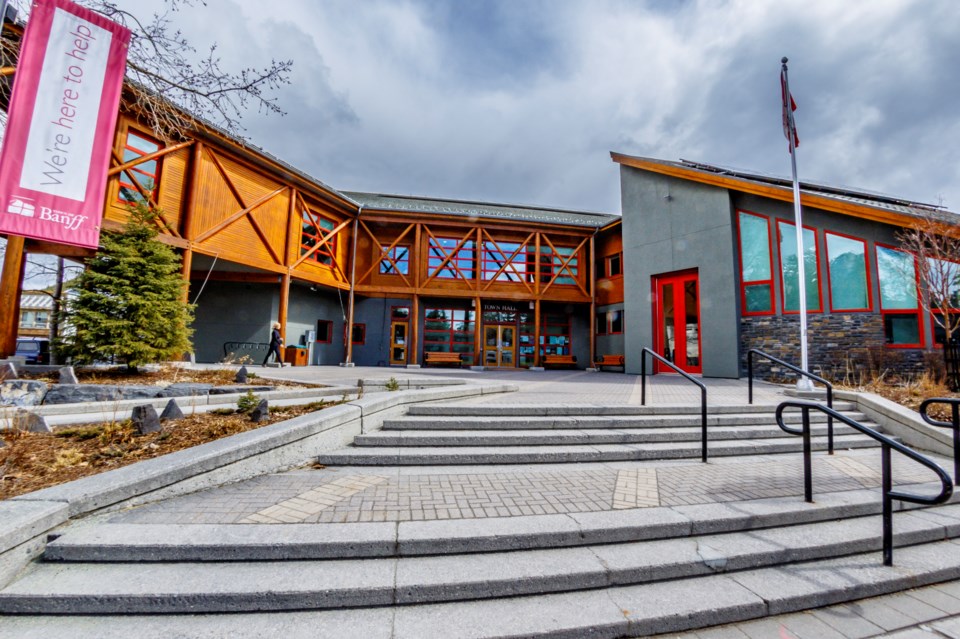BANFF – The Town of Banff looks set to go with a 30 kilometre-an-hour town-wide speed limit in the busy tourist community.
On Monday (June 28), the governance and finance committee unanimously directed administration to draft amendments to the traffic bylaw for a town-wide 30-km speed limit for council’s consideration.
“I’m ready to pull the trigger,” said Councillor Brian Standish.
“For me, and I am sure for everyone, this is about safety. It’s definitely a priority for me and I’d like to see it come back sooner rather than later.”
Under Banff’s current traffic bylaw, the speed limit on all roads is 40-km/h unless otherwise posted. Some roads, however, are already 30-km/h speed zones, including Banff Avenue, Bow Falls Road, Norquay Road, Middle Springs Drive, Cougar Street, Glen Avenue and part of Buffalo Street.
Primary streets that remain at 40 km/h include all roads in the industrial compound, Cave Avenue, Mountain Avenue, Spray Avenue, parts of Buffalo Street and Tunnel Mountain Road. All school zones are 30-km/h.
Amanda Arbuckle, the manager of recreation for the Town of Banff, said there is ample evidence that reducing speed limits lowers the risk of injuries and fatalities for both vehicle passengers and pedestrians.
In addition to reducing the potential of injuries and fatalities, Arbuckle said lowering speed limits on streets shared with cyclists and pedestrians also results in a mode shift to active transportation.
“The risk of injury significantly increases past the 30-km/h speed limit,” she said.
“People will most likely feel safer and more comfortable to be on roadways if vehicles are travelling at a slower rate of speed.”
In May this year, the cities of Calgary and Edmonton reduced the speed limit on their residential streets from 50-km/h to 40-km/h. Edmonton’s downtown streets were also dropped to 40-km/h. Airdrie and Cochrane already have 30-km/h in all residential zones.
Outside of Alberta, the cities of Toronto and Vancouver have adopted a 30-km/h speed limit for residential and collector roadways.
“There are many other cities and towns across the province and country that are currently reducing speed limits for safety reasons on connector and residential roadways,” Arbuckle said.
Banff’s new streetscape design guidelines, which were adopted by council in 2020, also propose all reconstructed roadways see speed limits no greater than 30 km/h.
Arbuckle said typically this includes driving lanes being reduced to support increased space for active modes of transit.
“As roadways get improved over time, we’ll see a reduction in speed limits,” she said, noting that is the plan for the redevelopment of St. Julien Road.
“Through public consultations… from the residents of that area was a request for a reduction of speed limit because speed was a concern.”
Councillor Corrie DiManno voiced support for a lower town-wide speed limit.
“You just have to walk around in the summer time and you see people of all ages on their bikes, or on skateboards or scooters,” she said.
“It’s really important we make our streets as safe as possible for everyone who is getting around town in a very sustainable way.”
Councillor Chip Olver questioned whether it would make more sense to keep some of the steeper roads such as Tunnel Mountain Road and Mountain Avenue at 40-km/h.
“There was some discussion from members of the public who mentioned there were particular roads that it would be very challenging to go 30-km/h unless you rode your brakes the entire way with the steepness of those hills,” she said.
“I think that’s one of the reasons we didn’t include those streets last time. Would it make sense to keep roads like that at 40-km/h instead of 30?”
Arbuckle said that’s probably a strong reason to lower the speed limit to 30-km/h, particularly because cyclists and pedestrians share those streets.
“You would want time to be able to react and stop and manoeuvre around those on their active modes in those situations,” she said.
“The data says you would have more time for reaction and that pedestrians or cyclists would also have more time to react as well even on those steeper roadways.”
In the meantime, council also gave direction to administration to look at possible safety improvements along Buffalo Street at the pedestrian crossing near the Bow River pedestrian bridge ahead of the potential speed limit change.
Coun. Peter Poole said that is a very important pedestrian crossing for children going to school.
“I’ve sat there watching cars speed up and then having to put on their brakes because there are children on bicycles coming and going to school,” he said.
“Is there some way we can increase the safety of this intersection before this bylaw comes back to us?”
Administrative officials say the easiest thing to do is to put the issue on the agenda of the sign and traffic committee.
“We can monitor speeds down there and make a change if we need to in advance of the bylaw,” said Adrian Field, the Town of Banff’s director of engineering.




